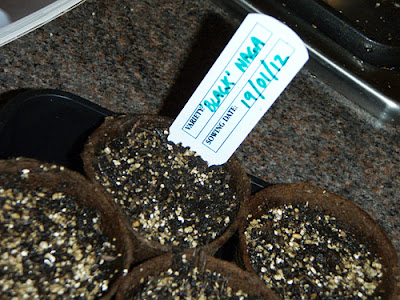 |
| The grow-room is looking a bit more organised after a tidy up of the trays. |
Enter the Black Naga chilli...
Now whether it was the added difficulty and challenge of growing super-hots, the instability of the strain (you may end up with no dark fruit at all) or just the amazingly cool name, I decided that this chilli had to be my first attempt at growing a superhot. A relation of the fearsome Bhut Jolokia (some claim just a Chocolate Bhut rather than a new strain in it's own right) this sinister and ugly pod rocks in at a mere 800,000 SHU, so that's roughly 250 times hotter than a Jalapeno.
So for this very important chilli I decided to take a little more care with my planting. I'd read that when planting seeds it would be useful to add vermiculite to the compost as this retains nutrients and stops the compost drying out. Likewise, adding perlite when potting on seedlings would help drainage and improve aeration. I also decided to test out some small peat pots to see if they were an improvement on my homemade toilet tissue pots - just like the cardboard pots, when roots start growing through the pot you plant the whole thing on into a larger pot, avoiding disturbing the fragile roots.
 |
| From left to right: The empty pots, the perlite mix, the vermiculite mix with seed on top and the final planted pot. |
I await with keen interest to see, firstly if the peat pots and vermiculite mix make a huge difference, and secondly, to see if the Naga does actually bear any of the dark brown/black fruit that it's rumoured to produce. Roll on the summer!

No comments:
Post a Comment